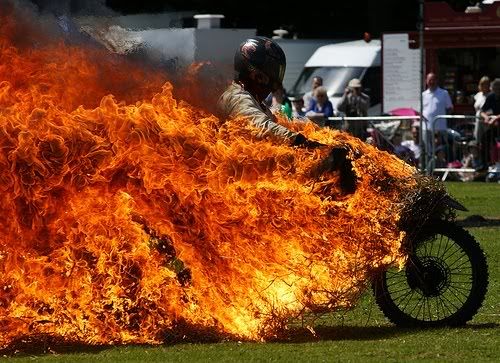Granted
Not taking it for granted. That the PO of "my' bike had a friend that was a wantabe electrician, so some of the wires in "my" harnes a not OEM, thus, the finding auto grade stuff here and their, so I conced that all the OEM wires may be of the exact same type Now that I know Whiskey is useing wires from anouther yamaha harnes, he should be fine with the type of wire he is useing. As to the problem of not being the correct color code, if not planning to splice into the wires at a later time, you could just atach a pice of the correct color coded wire to the end of the replacment wire where it stops at its connector
Now that I know Whiskey is useing wires from anouther yamaha harnes, he should be fine with the type of wire he is useing. As to the problem of not being the correct color code, if not planning to splice into the wires at a later time, you could just atach a pice of the correct color coded wire to the end of the replacment wire where it stops at its connector
Not taking it for granted. That the PO of "my' bike had a friend that was a wantabe electrician, so some of the wires in "my" harnes a not OEM, thus, the finding auto grade stuff here and their, so I conced that all the OEM wires may be of the exact same type
 Now that I know Whiskey is useing wires from anouther yamaha harnes, he should be fine with the type of wire he is useing. As to the problem of not being the correct color code, if not planning to splice into the wires at a later time, you could just atach a pice of the correct color coded wire to the end of the replacment wire where it stops at its connector
Now that I know Whiskey is useing wires from anouther yamaha harnes, he should be fine with the type of wire he is useing. As to the problem of not being the correct color code, if not planning to splice into the wires at a later time, you could just atach a pice of the correct color coded wire to the end of the replacment wire where it stops at its connector
 but I try not to make a habit out of it. if you can go A to B with new wire you'll save yourself the trouble (or someone else) of having to do it again.
but I try not to make a habit out of it. if you can go A to B with new wire you'll save yourself the trouble (or someone else) of having to do it again.





Comment